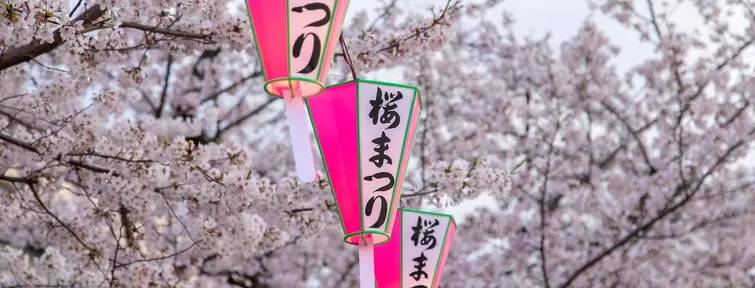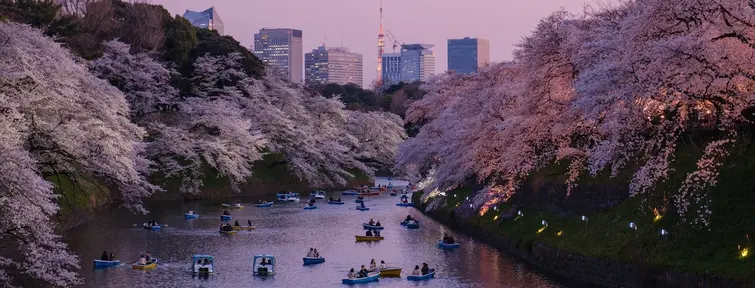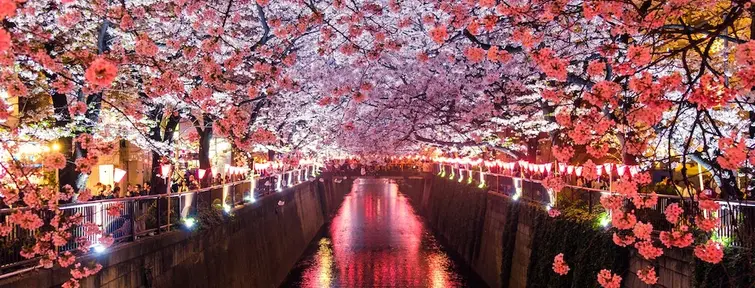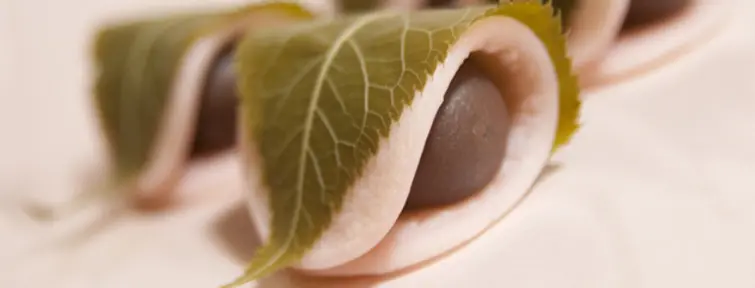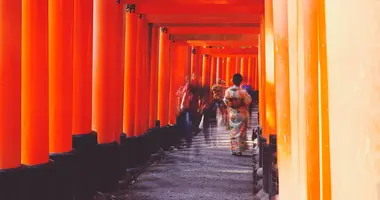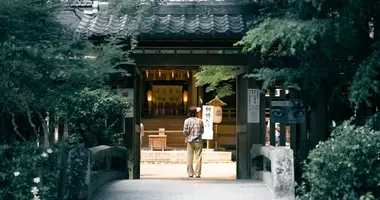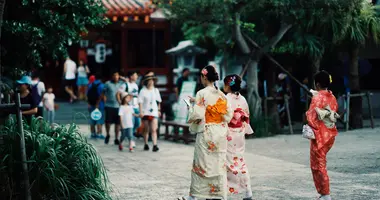Cherry blossoms
Sakura in bloom
Cherry blossoms season
Each year with the approach of spring Japan comes alive: the parks are dotted with pink, festivals are held to celebrate the flowering of Japanese cherry trees, the sakura season has arrived!
When can you see the cherry blossoms in Japan ?
The cherry blossoms last only about one to two weeks, so planning your trip is essential - however, this long-awaited event is subject to the weather, so this can make planning difficult. Cold, hot, rain, or wind can slow, speed up, or shorten the flowering time.
There are only seven days from when the cherry blossoms flower, kaika, to when they reach their full bloom, mankai. If there is no bad weather, the blossoms will remain for a further five or six days. There is a maximum life of two weeks for these little blossoms, from the flowering to the petals fall off.
Good news: if you miss the blooming of cherry blossoms in one city or region, all is not lost! With Japan stretching over 3,000 km from north to south, it is possible to admire the cherry blossoms from early March to early May throughout Japan. With more than 100 varieties of cherry trees in the country; if you miss the popular (Somei Yoshino), you will most likely see another variety blooming if you travel between early March and early or mid-May, depending on the region.
Follow the cherry blossom front with a JR Pass
Visit Japan during the cherry blossom season
Do you want to go to Japan during the cherry blossom season? Explore our tours for some inspirations and suggested routes to see the best of Japan during the spring.
- Capital and treasures of Japan: This 13 days tour includes visits of the most iconic sites of Japan.
- Classical Japan: Experience Tokyo, Hiroshima and Kyoto on this 13 days tour.
What are the origins of Hanami?
The custom of hanami dates back to the Nara era (710-794), when plum flowers, just imported from China, became an object of admiration in Japan.
- Read more: Cherry blossom season: When to go?
The trend changed during the Heian period (794-1185), and it was the turn of cherry blossoms, or sakura, to be admired. The cherry blossom then becomes sacred, for two reasons: it formerly announced the rice planting season. Therefore a moment of offering (food and sake) to the kami (gods) was thought to favor the coming harvest and symbolized the fragility of the fleeting nature of existence. Japanese cherry trees only flower and reveal their beauty for ten days a year, before disappearing.
- Read more: Lean about the history of Hanami
What is the etiquette of Hanami?
- Check that hanami is allowed
- Reserve a pitch early (first come first serve basis)
- Leave the place clean, bring back trash bags and don't forget to sort it out
- Touch with the eyes: do not pluck or break a branch, walk on the roots, or pick the flowers
- Do not make too much noise
- Remove your shoes
Where can you see the cherry blossoms?
Our selection of places to admire the cherry blossoms:
Other must-see places to see Sakura in Japan:
Japanese cuisine: Sakura season specialities
When spring comes, the big brands and chains release their limited edition products on the theme of cherry trees. Mcdonald's, Starbucks, Häagen Dazs, Kitkat, Coca Cola, new drinks and new dishes are created every year. But there are also traditional pastries with a sakura flavor.
- Sakura mochi: superstar of the season
- Sakura domyoji: sakura mochi Kansai version
- Sakura yatsuhashi: the triangular mochi of Kyoto
- Sakura kanten: cute pink flowered jelly
- Sakura no hanazuke: infusion of marinated flowers
- Hanami dango: a skewer with flowers
- Sakura dorayaki: pancake with cherry blossoms
Useful Japanese words for cherry blossom season
- Hanami: traditional Japanese custom of appreciating the beauty of flowers, literally “cherry blossom viewing”
- Sakura: cherry blossom
- Kami: deity of the Shinto religion, to whom offerings were made at the time of the cherry blossom.
- Sakura zensen: forecast of cherry blossoms across the country
- Kaika: flowering periodMankai: peak flowering period
- Sakuramochi: Japanese pastry made from sticky rice dough and bean paste
- Dango: dumpling of sticky rice dough
- Dorayaki: a pastry made up of two pancakes and a filling, traditionally made with red bean paste
To go further:
